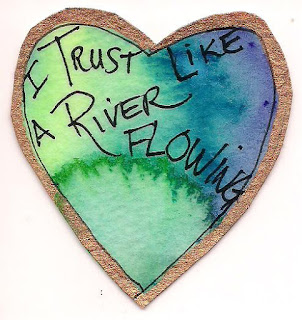Bouncing Back after Public Failure
'The point isn't to learn to fail it is to learn to bounce back.' Rosabeth Moss Kanter Harvard Business Review blog
What has you licking your wounds in shame?
Think about your past moments of 'public failure'--what did you want to do? How did you handle your disappointment? How did you feel about failing in full public view?
Perhaps You:
- Put yourself out there to a new love interest, but your advances were rebuffed.
- Worked for an organization for many years and then they laid you off.
- Let everyone know you really wanted a job you applied for, then you didn't even get an interview.
- Left your job for another 'better opportunity' but it didn't work out and you ended up with nothing.
- Got divorced after many years of marriage.
Public Failure--The Crisis
Failing sucks--especially when we experience it in personally meaningful areas. We feel so exposed and vulnerable.
In those moments of 'failure'--after we've put everything we have into meeting a goal or achieving a dream--we're left exhausted and disappointed. The natural reaction is to retreat and hide--and never ever stick our necks out like that again.
In those moments of 'failure'--after we've put everything we have into meeting a goal or achieving a dream--we're left exhausted and disappointed. The natural reaction is to retreat and hide--and never ever stick our necks out like that again.
The Chinese symbol for the word 'crisis' is two pronged--meaning dangerous opportunity. In our moments of crisis--such as a public failure--we always feel the danger but how can we also recognize the opportunity that gives us the resiliency to bounce back?
Anytime we put ourselves out there in a public way we run the risk of feeling vulnerable and exposed. But we also increase our chances of experiencing the thrill of success--and that is the first place the 'dangerous opportunity' lies.
It isn't about whether we succeed in every situation, its about how we handle failure and put everything to good use--including dealing with disappointment.
The only difference between winners and losers is that winners lose more often but they stay in the game.
How to Thrive despite Public Failure
According to Rosabeth Moss Kanter, the difference between those who thrive despite public failures and those who throw in the towel in defeat is how we handle the losing or failure.
How to Thrive despite Public Failure
According to Rosabeth Moss Kanter, the difference between those who thrive despite public failures and those who throw in the towel in defeat is how we handle the losing or failure.
Rosabeth Moss Kanter HBR blog
Kanter goes on to say that even the most successful people face setbacks--and to have the resiliency to bounce back from mistakes or failures we must be willing to learn from our mistakes.
Embrace the Daily Dangerous Opportunities
While we'd all love to succeed without facing public humiliation in the process, it isn't the way it works.
We must accept the danger as well as the opportunity with each public step we take. The only way we can avoid public failure is by failing to step into life and actively go after things of importance.
To achieve our goals and dreams we must embrace the daily dangerous opportunity inherent in life.
Choose to move past your disappointments and feelings of shame for public failures. Learn to embrace each of your failures as evidence of your active participation in a successful life.
"The difference between winners and losers is how they handle losing," says Kanter. "That's a key finding from my ongoing research on great companies and effective leaders: no one can completely avoid troubles and potential pitfalls are everywhere, so the real skill is the resilience to climb out of the hole and bounce back."
Kanter goes on to say that even the most successful people face setbacks--and to have the resiliency to bounce back from mistakes or failures we must be willing to learn from our mistakes.
Embrace the Daily Dangerous Opportunities
While we'd all love to succeed without facing public humiliation in the process, it isn't the way it works.
We must accept the danger as well as the opportunity with each public step we take. The only way we can avoid public failure is by failing to step into life and actively go after things of importance.
To achieve our goals and dreams we must embrace the daily dangerous opportunity inherent in life.
Choose to move past your disappointments and feelings of shame for public failures. Learn to embrace each of your failures as evidence of your active participation in a successful life.
Choose to learn from your failures--and as soon as you are able, take the next step to make a contribution, or connection that propels you toward your dreams.
Be brave. Be bold. When you're ready, get back out there.
Be brave. Be bold. When you're ready, get back out there.
"Security is mostly a superstition. It does not exist in nature, nor do the children of men as a whole experience it. Avoiding danger is no safer in the long run than outright exposure. Life is either a daring adventure, or nothing."
Helen Keller
+Okay.jpg)
.jpg)

.jpg)








